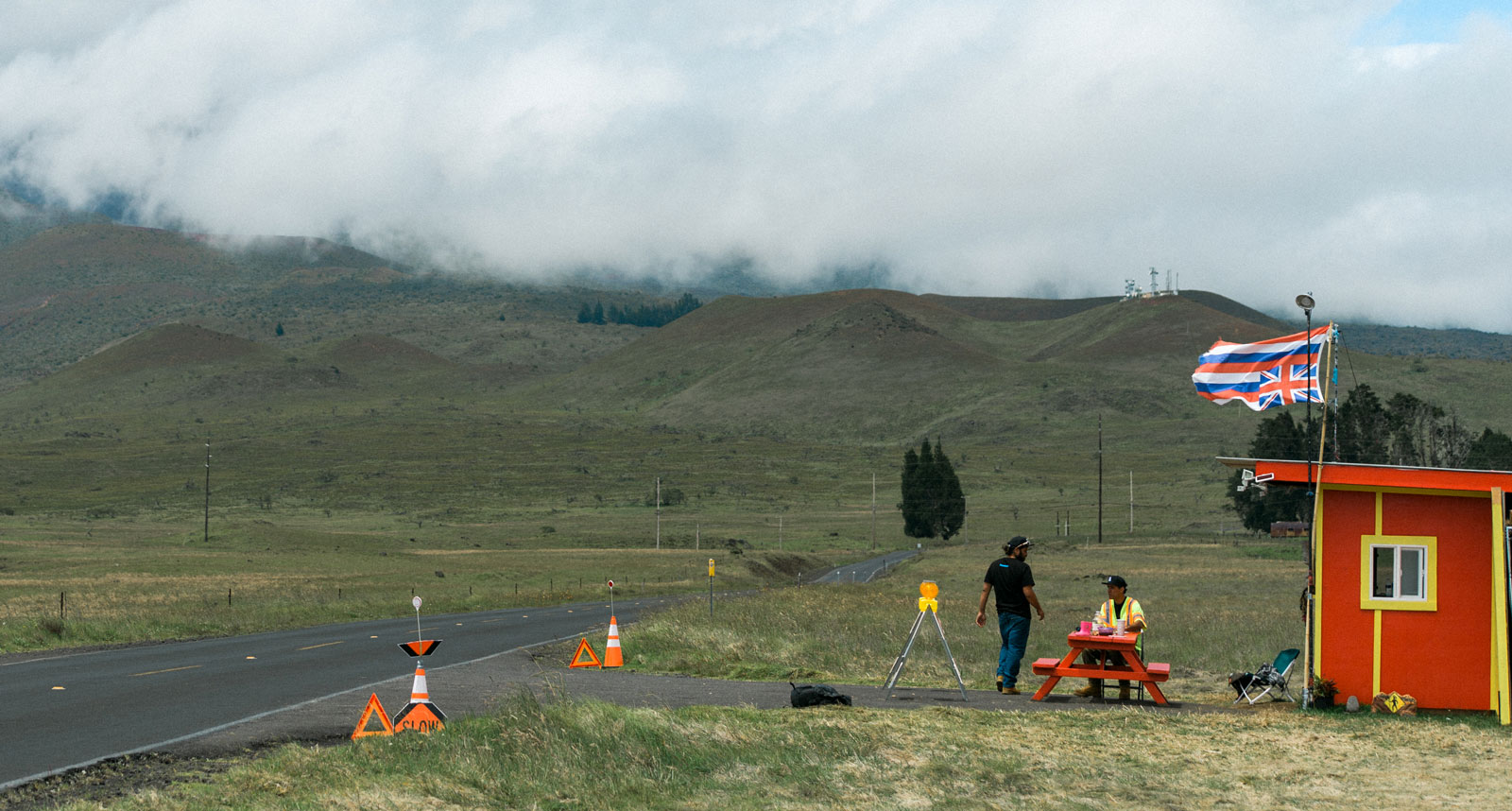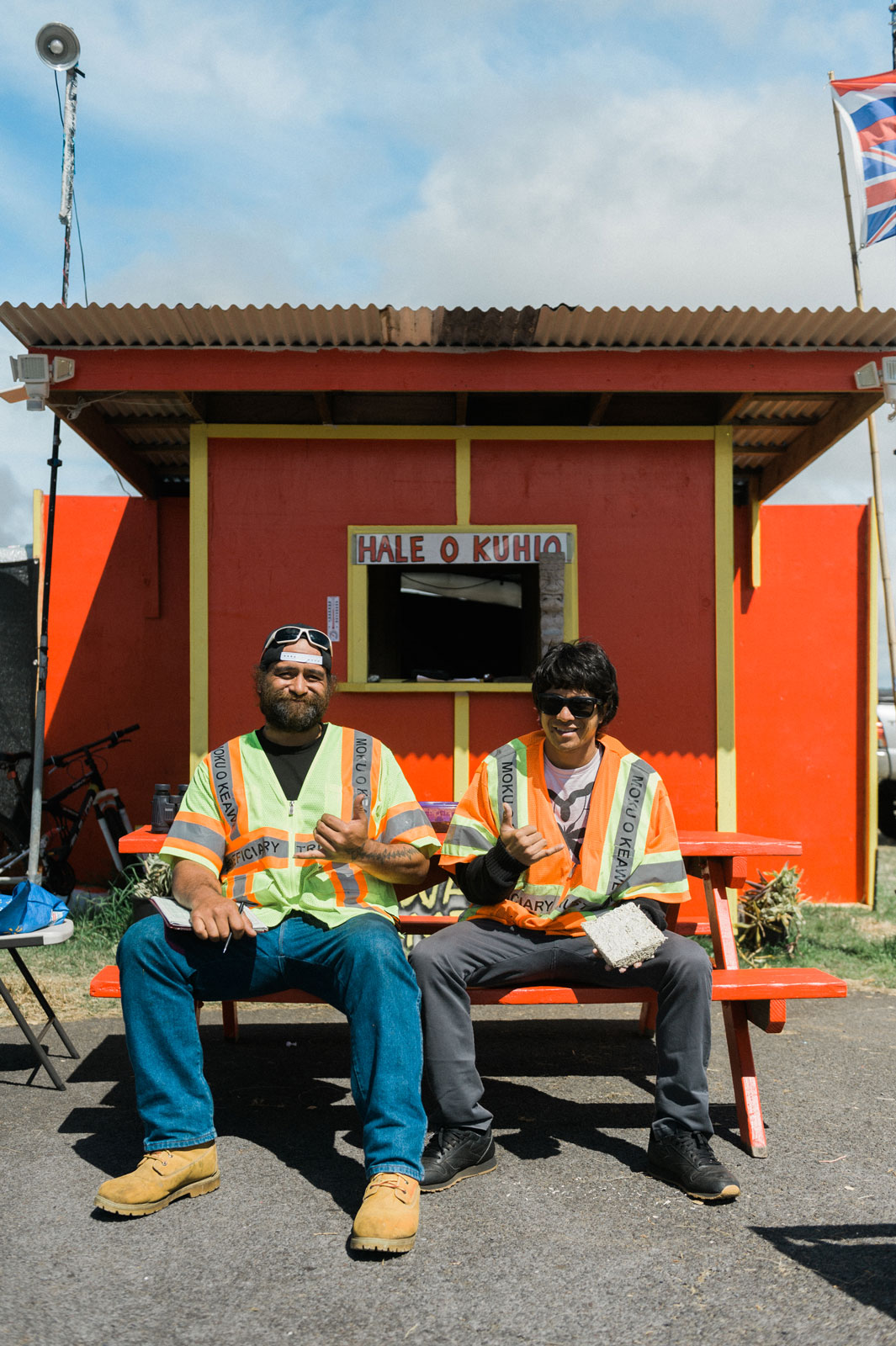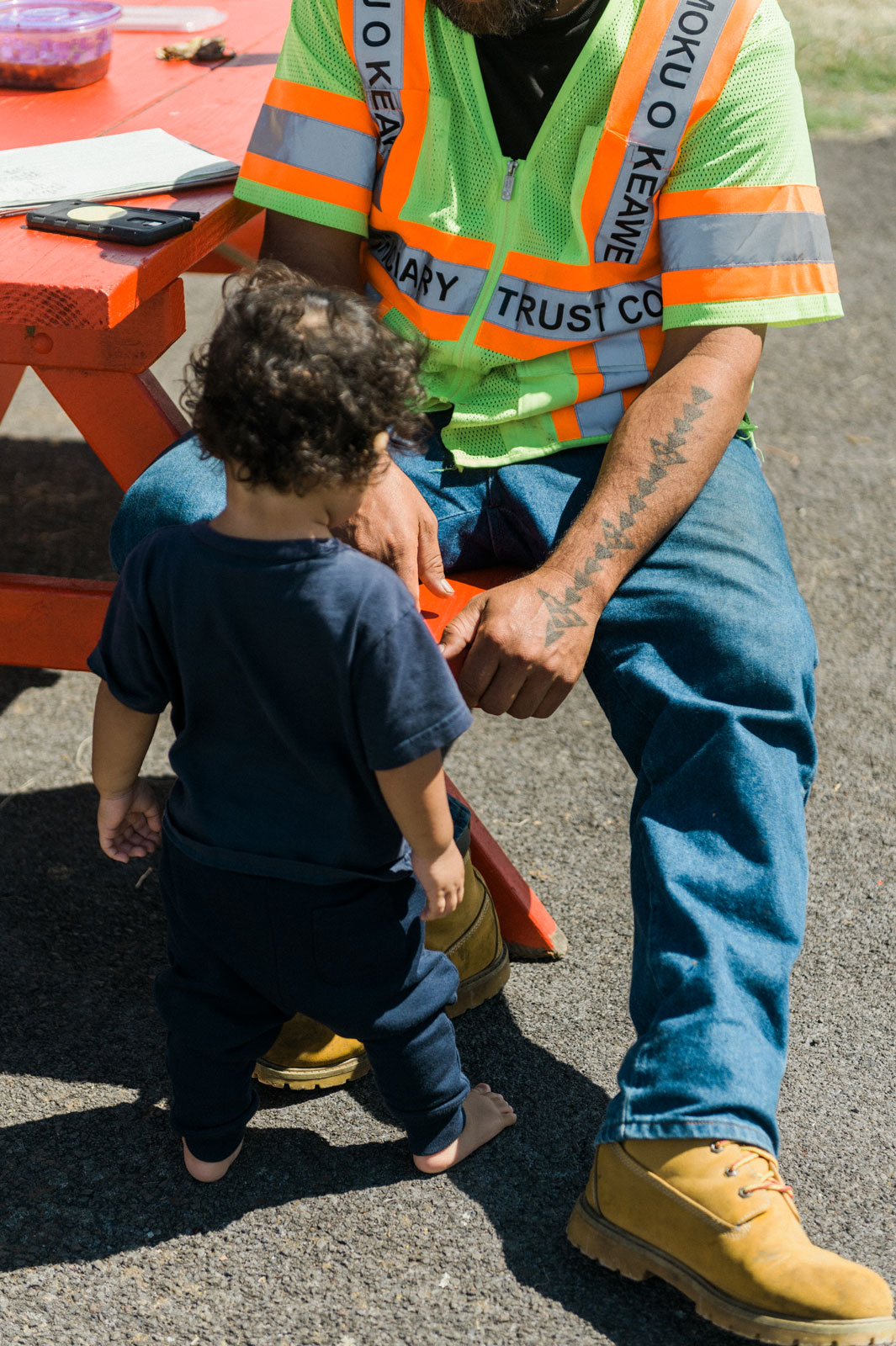At the base of Maunakea, the Kānaka Rangers keep a vigilant eye on the mountain to raise awareness of the lands surrounding it.
Standing nearly 14,000 feet above sea level, Maunakea is a majestic vision rising before those traveling to its summit. Along the mountain’s primary access road, a vast expanse of field is matched by a vast expanse of sky. Near the juncture where the access road meets Daniel K. Inouye Highway stands a small, wooden booth that had appeared in the silent chill of dawn in the spring of 2018. “This wen drop outta the sky,” Hanale Halualani says of it. This booth is where Halualani and his fellow Kānaka Rangers, the self-appointed stewards of Maunakea’s Hawaiian homelands, assemble for voluntary eight-hour shifts to monitor the mountain’s activity. Easily spotted by their wide smiles and neon safety vests, they stand alongside the road welcoming summit visitors and offering sweaters, water, and refreshment to anyone who stops.
They aren’t there to protest anything, the Kānaka Rangers make clear. As kānaka maoli and custodians of the ʻāina, they are there to observe. Every hour of every day, a rotating shift of three rangers (with three on standby and three on-call) man the observation station, monitoring reports of trespassing, illegal tour operations, and unauthorized camping. In 2014, a fire that burned down two historic cabins of Humuʻula Sheep Station off the summit access road was caused by an unauthorized camper, Halualani says. On March 26, their very first night watch, the rangers caught someone stealing fence lines and notified authorities.

The Kānaka Rangers also log vehicles by color, type (Hawai‘i Department of Land and Natural Resources or University of Hawai‘i, for example), license plate, and passenger headcount. Monitoring activity is the first step in addressing land and resource management issues surrounding water, forestry, and wildlife on Maunakea state trust lands, the Kānaka Rangers say. It precludes the crunching of numbers that inform dialogue about infrastructure issues like roads and housing.
“[The Department of Hawaiian Home Lands] say they need $7 million to do what we are doing, to build something like this and pay staff to take numbers,” Halualani claims, raising his eyebrows. “And here we are doing it for free.”
Their checkpoint, or “observation station,” as they call it, was erected on a date of significance to the Kānaka Rangers: Prince Jonah Kūhiō Kalanianaʻole’s birthday. “We want to bring awareness to his legacy,” says Halualani of the Hawaiian prince who served as Hawaiʻi’s first territorial delegate to U.S. Congress. In 1921, Kalanianaʻole spearheaded the passage of the Hawaiian Homes Commission Act, which dedicated 200,000 acres of homestead land across Hawai‘i to Native Hawaiians of 50 percent or more Hawaiian blood quantum. Those eligible are to be awarded a 99-year land lease at $1 per year. Kalanianaʻole’s intent, according to beneficiaries like the Kānaka Rangers, was to “‘āina hoʻopulapula,” or to rehabilitate the land and its people, thereby preserving the values, traditions, and culture of Native Hawaiians. A full-blooded Hawaiian, Kalanianaʻole was brokenhearted over what he saw to be the dying of his race since the overthrow of the Hawaiian monarchy in 1893. The act was his effort to save it.
But in the near century that has passed since the Hawaiian Homes Commission Act was enacted, the Department of Hawaiian Home Lands, the agency responsible for the provision of the act, has been stymied by lack of funds and poor administration, according to Halualani. There are 10,000 homestead leaseholders statewide and more than 26,000 applicants who are waitlisted. “But in the last 97 years, over 9,000 have died waiting on that list,” Halualani says. (The Department of Hawaiian Home Lands did not return requests for comment.)
If the wait for a homeland lease isn’t painful enough, the irony of non-beneficiaries being granted leases is an additional sting. The law allows for vacant land not yet awarded be leased to non-beneficiaries to generate income to help carry out the objectives of the Hawaiian Homes Commission Act. However, nearly half of the allocated land is granted to non-beneficiaries rather than to the Native Hawaiians it was intended for, and often at an exorbitantly low cost. This includes large swaths of the 67,000 acres of state trust lands that unfold along Maunakea’s slopes. The University of Hawaiʻi pays $1 a year to lease 11,000 acres near the summit. Nearby in Pōhakuloa, the U.S. Army uses nearly 23,000 acres for activities that include live-fire training at the rate of $1 for a 65-year lease period.
Retail enterprises, like Prince Kuhio Plaza shopping center, Walmart, Target, and Home Depot, all located in Hilo, were constructed on once-vacant Hawaiian Home Lands pasture lots. According to the Department of Hawaiian Home Lands website, commercial leases are awarded at market value. Still, a more pressing concern looms. “Where is the rehabilitation of the people when you destroy the land for commercial use?” Halualani asks. Rather than protest or excoriate the Department of Hawaiian Home Lands, the Kānaka Rangers prefer to be proactive. They want the Hawaiian Homes Commission Act better fulfilled by having more Hawaiians awarded their rightful lands, including those found at Maunakea. “This is the legacy we want to see succeed,” says Halualani of the Kānaka Rangers’ continuous presence and monitoring efforts on the mountain. “To make it simple, better land management leads to accelerated land awards.”
The cool, spring morning of March 26th, when the Kānaka Rangers and their observation station made their first official public appearance, Halualani remembers two squalls accompanied by rain—“blessings,” he calls them—followed by a vivid ānuenue, or rainbow, stretching over the vast expanse of sky. He saw the rainbow as an auspicious sign, a hōʻailona, or blessing, and as acknowledgment from the ancestors. “The ‘āina needs kānaka, and the kānaka needs the ‘āina,” Halualani says. “That is why we Kānaka Rangers are here. This land is our kuleana.”



